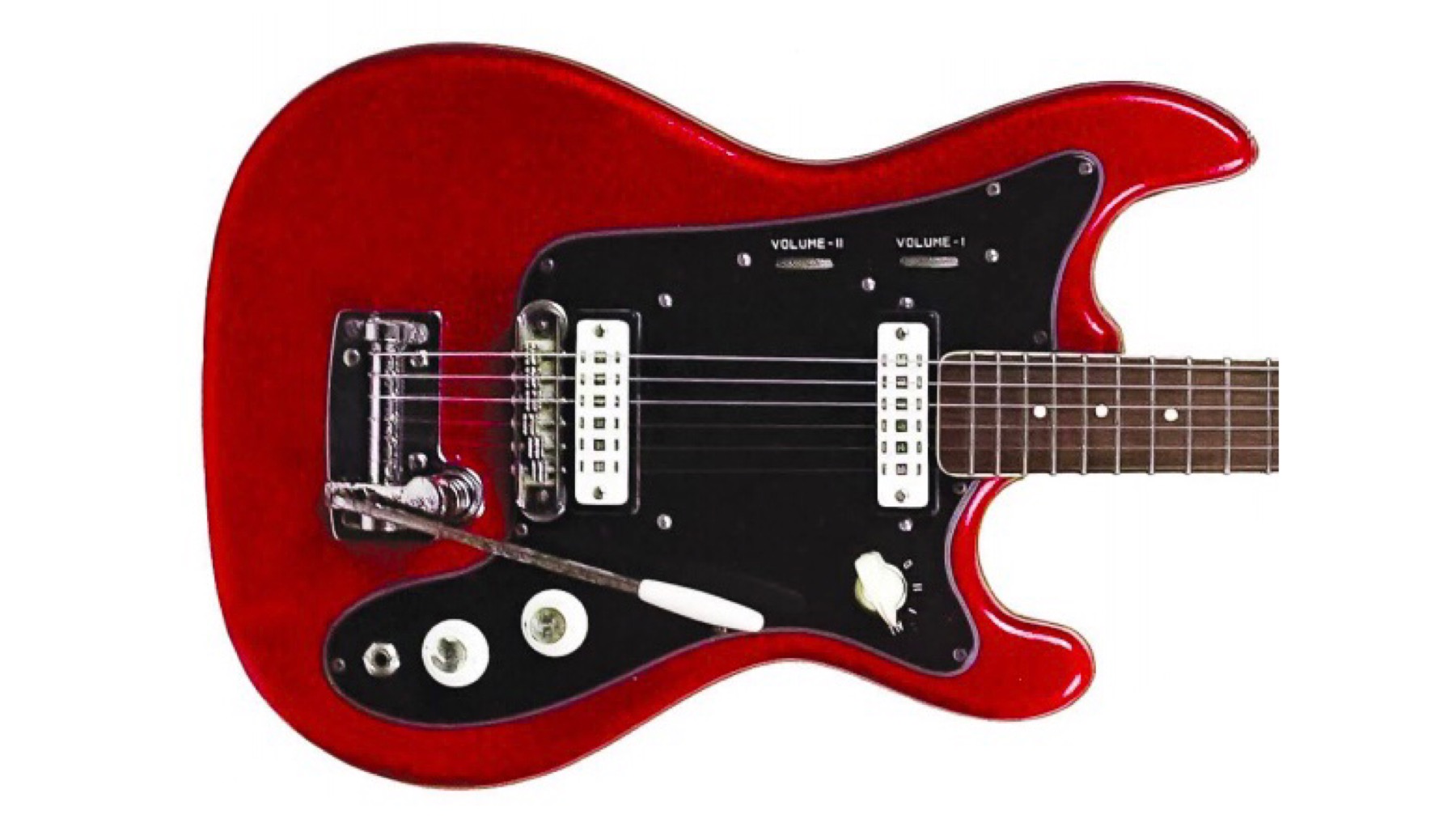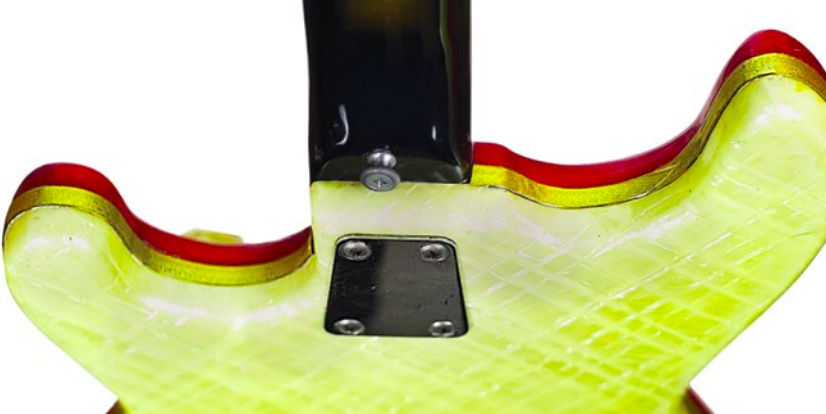Whack Job: 1964 Eko Condor 820 2V
This ‘60s Italian relic happens to be a no-nonsense, meat-and potatoes, rock-and-roll kind of guitar.

The early ‘60s electric guitar market was filled with European manufacturers, all of whom were toying with different designs. There was so much experimenting going on that a standard never really emerged, and things got rather confusing for the buying public.
Was it enough to have one pickup or four? Should the guitar have lots of dials and buttons? A tremolo bar or a set tailpiece? A narrow neck or a wide one? Thin frets or jumbo? Should the bridge be fixed or capable of being intonated?
This 1964 Eko Condor 820 2V from Italy seemed to notch all the right design choices, including the Fender-like shape, and that’s why today it’s sought by collectors and players alike.

Weirdo Factor
With its red sparkle, molded-celluloid finish and equally unusual white honeycomb wrap on the backside, the Condor 820 2V was considered outlandish even in its time. Guitars made in the U.S. had fine wood finishes that seemed to emulate the familiar and conservative look of acoustic guitars.
Even strangely-shaped models of the day, like Gibson’s Flying V, came with either a basic black finish or a clear stain over a beautiful piece of mahogany or korina. But ignore the colors and materials used in the Condor 820 2V and you’ll find a practical design that helps explain why it remains a desirable instrument.
Playability & Sound
Here we have a slender 21-fret mahogany neck with an ebony fingerboard that’s quite friendly. The shape is a gentle U, allowing you to anchor your thumb all the way up and down on the back of the neck. The medium frets on this example still have a lot of meat on them and feel as though they have just been polished. Down at the opposite end is a Bigsby-like vibrato that is simple, smooth and stays in tune.

The two single-coil pickups have a great range between them. The bridge unit has bite and is great for a funky rhythm or surfy lead line, while the neck pickup is quite warm and suitable for jazz. Granted, the knob configuration is a little weird. The lower bout features two tone controls, one for each pickup, while the upper bout sports a pair of roller knobs that control each pickup’s volume. The rotary chickenhead pickup selector offers a choice of bridge, neck, both and a master kill switch.
Get The Pick Newsletter
All the latest guitar news, interviews, lessons, reviews, deals and more, direct to your inbox!
With distortion, this little thing screams in all three settings. And even though the pickups are single-coil, they’re fairly quiet and not too microphonic.
Value
According to the decal on the headstock, this guitar originally retailed for about $80 at a radio and TV store in Italy called Sergio Rigo. When a Condor 820 2V comes up for sale today, it can fetch between $500 and $1,000, depending on its condition. Given the age of these guitars, I’d highly recommend trying before buying, but as they’re built solidly and feature a truss rod, I’d say you stand a good chance of finding one that still plays well.

Why it Rules
This is a quality guitar. Thanks to its bound neck, high-quality Van Ghent tuners and those great-sounding early ’60s Eko pickups, the Condor 820 2V has come to be known as a no-nonsense, meat-and[1]potatoes, rock-and-roll kind of guitar.
This is definitely an axe you could do a whole gig on. It’s light (six and a half pounds), plays as great as it looks and is as sonically versatile as most guitarists would ever need. Is it every bit as good as a Fender Strat, its obvious inspiration? That’s arguable. But it does have a red sparkle finish.
Thanks to Ronni Dinette.
Guitar Center's Guitar-A-Thon is back, and it includes a colossal $600 off a Gibson Les Paul, $180 off a Fender Strat, and a slew of new exclusive models
"We tried every guitar for weeks, and nothing would fit. And then, one day, we pulled this out." Mike Campbell on his "Red Dog" Telecaster, the guitar behind Tom Petty & the Heartbreakers' "Refugee" and the focus of two new Fender tribute models









